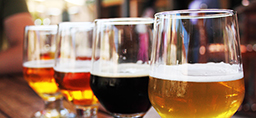
Experts say 60% of people will experience lower back pain at some point. In many cases, a herniated, or bulging disc, is to blame.
“It’s a common disorder we treat daily and it affects the majority of Americans at some point in their life,” said Moises Googe, DO, a neurosurgeon with Corewell Health.
What causes the bulge
Herniated discs have complicated causes, including both modifiable and out-of-our control factors.
Smoking is a major modifiable behavior that causes bulging discs, Dr. Googe said.
“Nicotine is a vasoconstrictor, so it closes off the tiny vessels in our nerves, tendons and joints, resulting in decreased blood flow,” he said.
That decreased blood flow causes discs to dry out, collapse and bulge.
“Think of it like stepping on a tin can. Just like the can, a disc gets wider as it gets flatter,” he said.
Other modifiable, or somewhat modifiable, factors include excessive weight, diabetes, osteoporosis and extreme conditioning.
Dr. Googe said age and genetics are the main non-modifiable factors.
Prevention
“Some people simply are prone to herniated discs as they age,” he said. “People who deal with multi-faceted medical problems, conditions such as liver disease or cardiovascular disease, also can be predisposed to spine conditions.”
Manual labor or high-impact sports can also increase your chance of experiencing a herniated disc, he said.
Athletes participating in some contact sports, such as football and hockey, as well as both professional and amateur golfers could develop bulging discs.
Dr. Googe noted that playing golf is one of the highest risk factors for developing spinal issues because of a golf swing’s rotation components.
Generally, all athletes involved in high-impact sports should wear proper protection and padding.
Prevention often involves changing your lifestyle, he said.
“Quit smoking–get counseling if you need it–maintain a healthy weight and exercise to get good core muscle strength. Also, it’s wise to get routine health screening to keep your blood pressure is in check, and if you have diabetes, make sure it’s under control,” he said.
For most people, prevention is straightforward.
“The best way to prevent developing a herniated disc is a healthy diet, exercise and lifestyle. It is that simple,” Dr. Googe said.
Treatment
Initial herniated disc treatments include physical therapy, injections, anti-inflammatories, ice, heat, rest, chiropractic care, muscle relaxer, steroids, massage and/or acupuncture.
Dr. Googe said most herniated discs, about 85 percent, tend to resolve on their own using these conservative methods.
However the pain and weakness in about 15 percent of cases may call for surgery.
Surgery indications usually include excruciating leg pain or weakness or nerve compression causing bowel and bladder dysfunction.
Typically, herniated discs are irreversible, though ongoing studies are evaluating whether stem cell injections can successfully rehydrate a disc.
Patients typically just acclimate.
Dr. Googe said exercise focusing predominately on core strength can help manage a bulging disc.
“When you offload weight and compression on the spine, you also will be offloading pressure on the disc,” he said. “Sit-ups are great, as are planks, plyometric exercises and extension exercises.”
Stretching, yoga and Pilates also are helpful for people managing this condition, he said.
 /a>
/a>
 /a>
/a>
 /a>
/a>